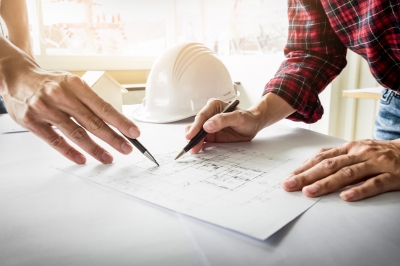The Philippine government is continuously upgrading its institutional processes for approving and executing big-ticket infrastructure projects to hasten the implementation of its ambitious “Build, Build, Build” infrastructure program, according to Finance Secretary Carlos Dominguez III.
The program consists of 75 flagship projects with a combined public investment of US$170 billion over the next five years.
Dominguez said the measures undertaken by the government to speed up project implementation include advancing right-of-way acquisition and land resettlement prior to the loan signing for the financing of infrastructure projects, and designating the Department of Budget and Management (DBM) as the procurement agent.
The government has also frontloaded budget allocations for its counterpart funding commitments and established project-monitoring offices to closely observe the completion of projects, Dominguez said.
He added that complementing the Build, Build, Build program is the administration’s Comprehensive Tax Reform Program (CTRP) to raise the Philippines’ tax effort over the regional average and provide a steady revenue stream for the government’s unprecedented infrastructure build-up.
The Build, Build, Build program and CTRP are designed, said Dominguez, to help the government grow the domestic economy by 7% or more into the medium term and pull down poverty incidence to just 14% by the time President Rodrigo Duterte leaves office in 2022.
To further fast-track the implementation of projects, Dominguez said that on his watch, the Department of Finance (DOF), along with the National Economic and Development Authority (NEDA), is now finalizing the guidelines for the implementation of a “3-in-1” process in which the approval of the NEDA Board, the Forward Obligational Authority of the DBM, and Special Presidential Authority are issued all at once rather than in span of several weeks or months as was previously done.
The traditional public-private partnership (PPP) method, which was “simply too tedious, too complex and prone to unnecessary delays” was also modified to a “hybrid PPP” model so that the government now implements the projects using a combination of its own budget, the massive inflows of official development assistance (ODA), and funds raised from bond floats at investment-grade rates.
This is intended to speed up project execution, reduce completion risks, and deliver the economic benefits to the people as soon as possible, Dominguez said.
“We continue to improve the institutional processes regarding project approval and execution. It is our desire to see the strategic projects completed at the shortest possible time in order to immediately realize their economic value and lessen unnecessary financing costs,” Dominguez said.
The government’s Build, Build, Build program, Dominguez said, “benefits from expanded ODA flows from our friends in the region such as China and Japan” as well as from “a revived interest in infrastructure investments among multilateral institutions such as the Asian Development Bank (ADB), World Bank (WB) and Asian Infrastructure Investment Bank (AIIB).”
“These institutions have evolved a keen sense of the importance of infrastructure-based intervention to assist in economic emergence,” Dominguez said. “We have combined loans and grants to arrive at economically astute and technically superior designs for the projects we intend to undertake.”
Given that infrastructure investments have the highest multiplier effects, Dominguez said the administration is undertaking its 75 strategic infrastructure projects to sustain the growth momentum, create jobs, and attract investments. Of these projects, 23 are “shovel-ready” and the rest are expected to pass the approval processes within the year, he said.
“Over the next five years, we expect to invest about US$170 billion in providing better infrastructure projects for our economy and our people. Our foremost consideration is improving transport facilities that will make movement of goods and people more efficient. We are building several railway lines, a subway system for the Manila area, and new roads that will serve as growth corridors for key areas of the country,” Dominguez said.
He said the Philippines underinvested in infrastructure because of the debt crisis in the mid-1980s and spent only 2.2% of its gross domestic product (GDP) on infrastructure in the 1990s, which is less than half of what the country’s neighboring states were investing at that time. This underspending continued up to 2015, with infrastructure investments amounting to only 2.9% of GDP, leading to problems of congestion and inefficiency in the country’s ports, airports, and roads.
He said that in 2017, public spending on infrastructure rose to 5.4% of GDP, and this year to 6.3%, which is 25.4% of the national budget.
“In the Philippines, the infrastructure program is at the core of our strategy for rapid and inclusive growth. With the highest multiplier effects, investments in infrastructure enable us to stimulate economic expansion,” Dominguez said.
“Since the Philippines is an archipelago, investments in infrastructure enable us to build an efficient logistics backbone that addresses the problem of stranded island communities and inaccessible farming areas.”
Image courtesy of IndypendenZ at FreeDigitalPhotos.net






